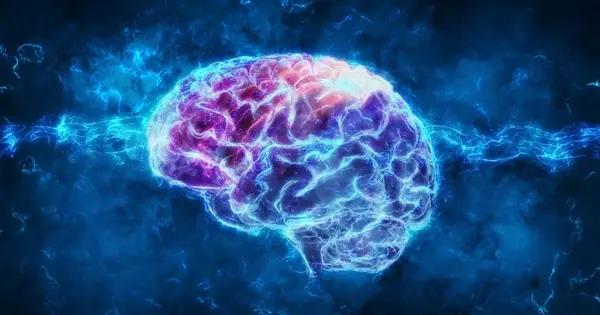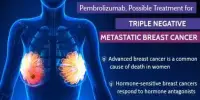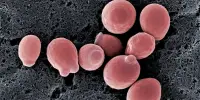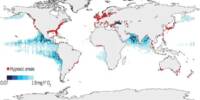Researchers are exploring the use of cell self-destruction, also known as apoptosis, as a potential treatment for brain tumors. Apoptosis is a natural process by which damaged or unwanted cells in the body are eliminated. In cancer, however, the process of apoptosis is often disrupted, allowing cancer cells to grow and divide uncontrollably.
Glioblastoma tumor cells have been found to be particularly sensitive to ferroptosis, a type of cell death that can be triggered by removing certain amino acids from the diet. Glioblastoma is the most common type of adult brain tumor. The disease is completely fatal, with no cures, making it the most aggressive type of cancer. Because of the poor prognosis, researchers and neurosurgeons have been motivated to better understand tumor biology in order to develop better therapies.
Dominique Higgins, MD, Ph.D., an assistant professor in Neurosurgery, has answered the call. Higgins and colleagues at Columbia University discovered that glioblastoma tumor cells are especially susceptible to ferroptosis, a type of cell death that can be induced by removing certain amino acids from the diet.
“First, we discovered that when certain amino acids are removed from animal models, glioblastoma cells are more likely to die by ferroptosis,” Dr. Higgins explained. “Secondly, we discovered that removing these amino acids increases the effectiveness of our drugs in inducing ferroptosis in cancer cells.”
Their findings were published in Nature Communications.
The discovery of ferroptosis adds to the excitement. It is a rapidly growing body of research, and we are discovering that it is very important for a wide range of biological processes, not just cancer.
Dr. Higgins
Ferroptosis is an iron-dependent type of “programmed cell death,” or a biological process in which cells “self-destruct” when instructed to do so. Because our bodies only kill cells when absolutely necessary, the process is tightly regulated by biological mechanisms. However, because ferroptosis was discovered only a decade ago, researchers are only now beginning to understand the process.
“The discovery of ferroptosis adds to the excitement,” said Higgins, a member of the UNC Lineberger Comprehensive Cancer Center. “It is a rapidly growing body of research, and we are discovering that it is very important for a wide range of biological processes, not just cancer.”
Every cell has certain safety features to keep it from going through ferroptosis in an unpredictable way. Two amino acids, cysteine, and methionine, are critical for preventing the process from starting in cells. We typically pick up these amino acids through our diet.
Therefore, Higgins’ research team decided to focus their efforts on these components.
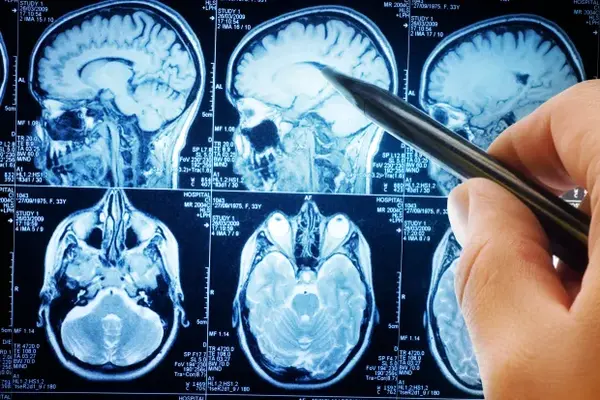
They discovered that by depriving animal models of cysteine and methionine through a customized diet, glioblastoma cells were significantly more likely to die via ferroptosis. They also discovered that the diet made their chemotherapy drugs more effective at inducing programmed cell death, which meant that very low doses could achieve a more potent effect than before. Finally, the animal models’ survival improved after they went on the diet.
“Now, we need to find a way to eliminate those components through dietary needs while still maintaining energetic requirements that a patient may have, particularly a cancer patient, who has different requirements than the average patient,” Higgins explained.
Higgins is working with colleagues at UNC Lineberger to develop a clinical trial for patients with glioblastoma after demonstrating the diet’s efficacy in animal models. He intends to put patients on the diet before surgery to learn how it affects the body and the tumor. After removing the tumor from the brain, he will examine it to see how well the tumors responded to the diet.
This type of diet has also been shown to be very effective in sarcoma, lung cancer, and pancreatic cancers, so there is hope that it can be used to supplement chemotherapy and/or surgery to remove tumors throughout the body.
Higgins is also working with Shawn Hingtgen, Ph.D., professor of pharmacoengineering and molecular pharmaceutics at the UNC Eschelman School of Pharmacy and associate professor in the Department of Neurosurgery, to study the brain’s response to treatment in a more natural setting.
Hingtgen is the overall grant PI for Project Brainslice, a multi-institutional effort to test neurological therapies using tumor samples grown on slices of brain tissue. Higgins maintained that this is a better way to study treatment response than simply observing it in a plastic dish.
Project Brainslice is just one of the many research tools available to researchers at UNC’s School of Medicine. “We have a lot of different research tools that are unique to UNC, and that is one of the main reasons I wanted to come to UNC,” said Higgins, who will join UNC Neurosurgery in the fall of 2022. “Just in terms of the ability to study a clinical problem in an accurate animal model, it is one of the few places in the country that has like an established setup to do that.”
